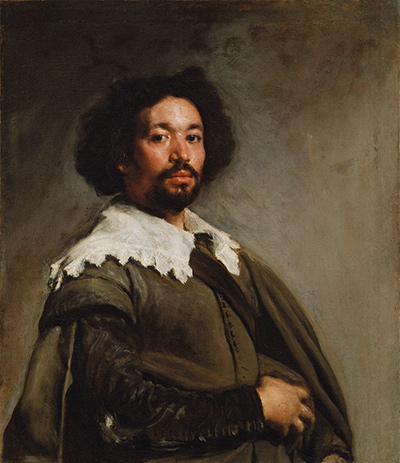Portrait of Juan de Pareja
Diego Velazquez's Portrait of Juan de Pareja is completed in the artist's recognisable Baroque style. He is famous for other portraits as well, including that of Pope Innocent X and his painting of Modena's duke, painted in the city of Madrid in 1638.

Velazquez's idealised style was well suited to the Catholic ideals which governed political life at that time. Administrators sought to encourage beauty in life and art and this was reflected in the artwork they commissioned for churches and other public buildings.
Velázquez was likely to have painted this dynamic picture in Rome, probably in the first half of 1650. It was initially shown in March of that year. At the time Velazquez made this artistic creation, he had been court painter to Spain's Philip IV for over thirty years.
Juan is indicated half-length, looking eagerly at the watcher. His neckline is so thin and padded it looks as though it was just naturally worn as time progressed. The folds and wrinkles in his coat are thick. In any case, it's the gap in Juan's sleeve that makes viewers speak of the truth in this painting.
Juan's posture is tasteful and the painting is exquisite but that straightforward tear lets us know unequivocally that this is a lower class man. This was the Golden Age when it came to Spanish painting. Velazquez was the chief Spanish artist of this extraordinary period and for many people, this is the painting that resounds with them the most.
Juan de Pareja was the craftsman's enslaved colleague. Velázquez built up an astounding solidarity between the chromatic nuance of his palette and the unprecedented application and layering of the paint in the work. Perhaps a greater depth of emotion is seen in this magnificent work of oil on canvas because of his long professional history with Juan.
As indicated by one of the craftsman's biographers, when the picture was first put in plain view it got a high level of praise because this alone was like truth. Some time later, Velázquez marked an agreement of manumission that would free Juan from servitude in 1654. This freed Juan de Pareja to work as an autonomous painter in Madrid.
Diego Velázquez was the most respected European painter who ever lived. By many, he is regarded as the best. He had a talent for passing on a feeling of truth. He gave the best of his gifts to paintings which sensuously reveal reality.
Aside from portraits his sketches incorporate scenes, legendary and religious subjects, and scenes from normal life. The vast majority of them, in any case, are representations of court notables which rank with the pictures painted by Anthony Van Dyck and one of his sources of inspiration, Titian.